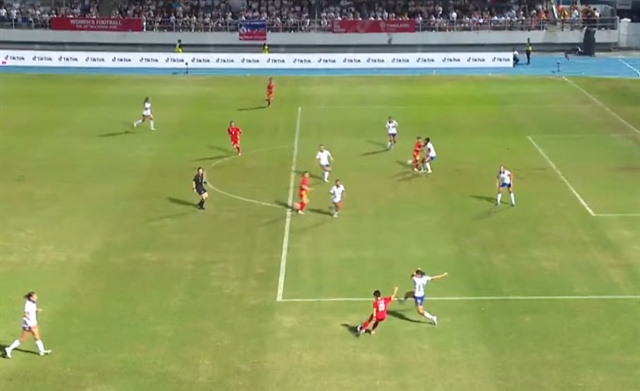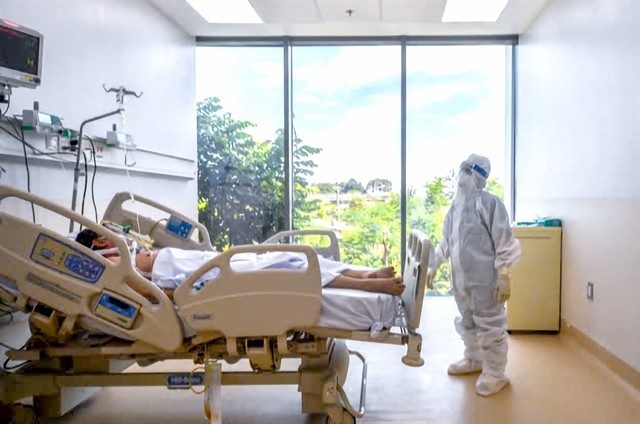 Opinion
Opinion

Director of the Ministry of Health’s Department of Medical Examination and Treatment Lương Ngọc Khuê spoke to the press about the ministry’s recently issued master plan to improve emergency and critical care capacity of hospitals nationwide amid the complex developments of COVID-19.

|
| Treating a critically ill COVID-19 patient in HCM City. Photo courtesy of the Ministry of Health |
Director of the Ministry of Health’s Department of Medical Examination and Treatment Lương Ngọc Khuê spoke to the press about the ministry’s recently issued master plan to improve emergency and critical care capacity of hospitals nationwide amid the complex developments of COVID-19.
What is the capacity of emergency and critical care in hospitals at present?
According to a survey in 2021, there are more than 16,000 beds for intensive care nationwide. However, the number of beds and capacity for intensive care medicine still fail to meet increasing treatment demand of COVID-19 patients.
Many localities are facing a shortage of equipment to treat seriously ill patients. Even though a majority of hospitals have intensive care units (ICUs), they lack central oxygen systems and compressed air systems to operate ventilators. In addition, the shortage of cameras and a central tracking systems have made it difficult for medical workers to keep a close watch on critically ill COVID-19 patients.
In practice, ICUs in many hospitals have not yet implemented advanced critical care techniques such as invasive, non-invasive mechanical ventilation, cardiopulmonary bypass (ECMO), and dialysis.
At present, only a few hospitals have mastered artificial cardiopulmonary techniques due to the lack of specialised human resources, equipment for intensive care, inadequate investment and remuneration. Hospitals that can perform the techniques are Bạch Mai Hospital, the Việt Đức Hospital and the National Hospital for Tropical Diseases in Hà Nội, the Chợ Rẫy Hospital in HCM City, the Huế Central Hospital in central Thừa Thiên-Huế Province and Cần Thơ Central Hospital in Mekong Delta Cần Thơ City.
In order to help improve emergency and intensive care capacity for hospitals nationwide and to meet the treatment demand of critically ill patients with COVID-19 which are expected to keep increasing in the future, it is important for the medical examination and treatment systems to quickly set up and put into operation national and regional intensive care units.
There are currently more than 2,000 doctors working for emergency and intensive care units nationwide and many localities still face a severe shortage.
Many hospitals pay little attention to intensive care medicine as a result of the autonomy policy and they often transfer seriously ill patients to central-level hospitals in Hà Nội and HCM City for treatment. This has caused huge pressure for central-level hospitals which are often overloaded with critically ill patients as well as caused difficulties for the Ministry of Health in mobilising and coordinating human resources, equipment, materials and finance for localities.
Emergency and intensive care capacity in many localities is still weak, failing to meet the requirements of the scenario of facing a “super infectious” strain of virus.
Why has the Minister of Health issued the plan on improving emergency and intensive care capacity of hospitals in treating critical COVID-19 patients?
Việt Nam has faced the fourth wave of COVID-19 since April 27 which has caused serious results with the number of new cases increasing rapidly across the country.
Among patients under treatment, more than 400 are in intensive care units while 21 others with critical health conditions are receiving ECMO.
The pandemic has spread widely on a large-scale with many complexities, seeing many sources of infection, outbreaks and the appearance of many variants, particularly the highly contagious Delta variant which has led to a remarkable increase in the number of COVID-19 patients with critical health conditions and fatalities. The medical examination and treatment system is facing the biggest challenges ever.
The Government and the Ministry of Health have asked localities to enhance their intensive care capacity and focus on treating critically ill patients to minimise the number of deaths.
The transfer of seriously ill patients to central hospitals in Hà Nội and HCM City would pose high risks of spreading the disease and the patients could die on the way to the hospitals.
Therefore, critically ill patients should be treated right at localities with consultancy and support of doctors from higher level hospitals or leading experts.
How will the improvement of emergency and intensive care treatment help COVID-19 patients?
The building of the master plan is a necessary and urgent task, requiring the participation of not only the health sector, the Government, relevant ministries and agencies but the whole society.
The project is built with the key view of improving emergency and intensive care capacity of hospitals and at the same time concentrating resources and experts to treat seriously ill COVID-19 patients.
The project also set a target of setting up a network of centres receiving and treating severely ill COVID-19 patients across the nation; investing and upgrading equipment and infrastructure for intensive care units; enhancing COVID-19 treatment capacity of hospitals that are assigned to set up intensive care units; and training and improving capacity and professional skills of medical workers.
We also want to build and supplement policies to encourage and attract more qualified human resources to work at intensive care centres and departments of infectious diseases. — VNS




